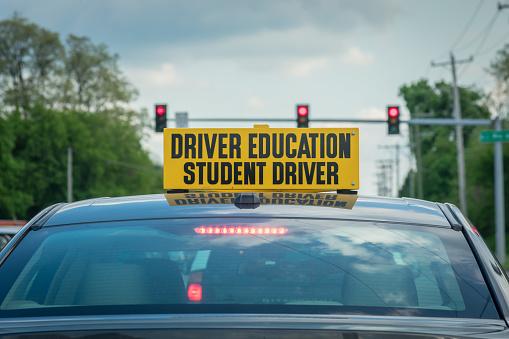Drivers education — often referred to as drivers ed — is a program for learning how to drive. Some high schools around Portland offer a drivers ed program at the physical location of their school; those classes are open to anyone who meets the criteria. For example, specifically within the Portland Public School (PPS) district, Cleveland High School has a program called ‘First Learn To Drive’ that meets at the high school, making the class likely made up of at least some Cleveland students. Even though this is a separate program from the school, and it is costly and time-consuming to take classes, there is an advantage to having greater accessibility with a program meeting at your own school. However, not all of the high schools in the PPS district have programs meeting at their schools. It’s great that drivers ed is offered at Cleveland, but it isn’t necessarily convenient to students who don’t attend the high schools where it’s offered, and it’s very costly for those who are able to take the program.Although the program is not provided at all high schools in the PPS district, it would be more reasonable if it was. That way, students could have the opportunity to learn how to drive in an environment they’re comfortable with and already know. Rather than students at PPS high schools having a hard time getting into drivers ed at other locations, they can just get easier access at their school. Drivers ed is not only a convenient option for learning to drive, it’s also safer than learning to drive without taking a class. The Oregon Department of Transportation (ODOT) has data that shows teenagers and young adults who haven’t taken drivers ed are more prone to convictions and crashes. In the years 2020 through 2022, the three-year average for crashes involving 16-year-olds with a drivers ed education was 166 crashes. For 16-year-olds without a drivers ed education, they had a three-year count of 562 crashes. Overall, 16 to 20-year-olds who didn’t take drivers ed made up 91.54% of the crashes that occurred, compared to only 8.46% of students who have taken drivers ed. This data shows that taking drivers ed can decrease young adults’ chances of collision while driving by enhancing their knowledge on the road, while teaching and protecting them at the same time. According to data from ODOT, students who take formal driver education are also far less likely to receive traffic citations. The safety of their students should be reason enough for PPS to move forward to having drivers ed at each high school. Naia Thompson, a student at Franklin High School, says that she’d be excited if drivers ed was an option at Franklin so it will be more accessible for her to learn to drive. Drivers Education Program Manager at ODOT’s DMV Transportation Safety Office, Jody Raska, states that “any public school or private business can become a provider of the ODOT-approved driver education program.” That statement leads to the big question of why PPS doesn’t offer drivers ed programs at more high schools. Raska then adds that “for Franklin High School to have a program, there is an application process that includes creating lesson plans and drive routes.” The application process could take a while, but that’s just a step closer to having the program at our schools. Other requirements to become a provider are that “a vehicle needs to be available and appropriately equipped with a passenger side brake and other equipment,” explains Raska. Once the application and required elements — such as the vehicles with passenger side brakes — are submitted and approved, the school can begin offering classes. I am a strong supporter of PPS starting this process of applying for the drivers ed program at Franklin, as well as all PPS high schools. The sooner the drivers ed program gets started, the sooner it can educate students in PPS, and help prevent student crashes from happening in the first place. David Douglas is a high school in a different district that offers a drivers ed program at their school. A David Douglas student who has taken the drivers ed program, who would like to go by Amran, says that “everyone at my school who’s had their permit for at least six months has a chance of getting accepted into the program.” Amran expands, saying that “the program lasts for three months.” Amran’s experience led to her learning “how the car works, how to drive safely in weather conditions, and the potential outcome of a bad decision while driving.” At the end of the program there’s a test that needs to be passed for the next step of getting your license, which Amran successfully completed with the help of the program. Drivers education not only teaches you how to drive but helps prevent collisions by educating their students. This education is vital to the opportunity for teens to get their license and keep them safe on the road.
Categories:
Should PPS Offer Drivers Ed?
March 6, 2024

Getty Images/iStockphoto
Drivers ed sign on car roof at stoplight in daylight
More to Discover

































